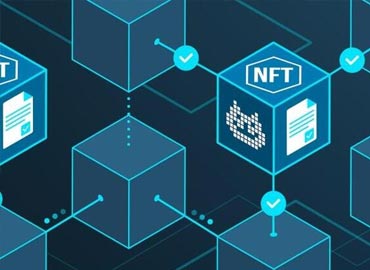A block contains several groups of transactions (and some added bits of metadata). Blocks are 'chained' together using unique identifiers, known as a 'hash.' In this way, blockchains can be described as decentralized ledgers.
Another advantage of blockchain technology is that it reduces the necessity for trust between parties acting in a transaction. This has many advantages - especially in business applications where the time and resources wasted on back-office auditing could be used productively.
Of course, there are some disadvantages to blockchain technology, such as its relative newness and highly technical design, which can make it difficult for public members to get involved.
In the following sections, we'll look at some different types of blockchain architectures and discuss how they work at a high level. We'll also list some common features of blockchains and list some current limitations with their development.
For this article, we'll be using the above definitions to describe blockchain technology. Even though many different types of blockchains exist, they all share these two core properties:
- Decentralized record-keeping.
- Consensus among parties with limited authority.
It's important to note that most blockchains aren't general purpose - most can only facilitate one or a few specific types of transactions involving cryptocurrency tokens. This is why when people talk about "blockchain tech," they're often really talking about the use case of the blockchain in the discussion being applied more generally across other industries where it may have applications.
Some common features of blockchains are:
- Append-only (all new data added in each new transaction).
- Timestamping (data and transactions linked to a particular time).
- Decentralized (no single authority controls the data which is available to all nodes).
Blockchains can be either public or private. If we were building a blockchain for the financial services industry, we might want one that's only visible to people who need access to it - such as bank employees or regulators. This way, they could ensure everyone was playing by the rules without exposing confidential commercial information.
On the other hand, if we were developing blockchain technology for retail customers - say, an app where users could pay their friends in cryptocurrency - we would want a blockchain that is entirely open and accessible by anyone.
Some examples of different types of blockchains are:
Bitcoin-style cryptocurrencies
These systems use a public blockchain that anyone can join and participate in, usually by running a full node or 'miner.' Tokens are generated via mining. The tokens have certain properties (most often scarce) which encourage people to try and win them via mining.
Mining groups together recent transactions into blocks. Each block has a specific description (known as a hash) which becomes more complex/longer when new transactions are added - this is difficult but not impossible for computers to do, thus adding an element of competition between network members.
The most successful miner gets rewarded with some tokens for their trouble, at which point the newly created coins will be owned by them (and technically, they'll be able to spend them). This is a great way to distribute new tokens fairly without requiring any central authority.
Examples of cryptocurrencies include Bitcoin, Litecoin, and Monero.
Private blockchains
If we were building a blockchain for a consortium (say several banks are working together on an interbank payment system), we might choose this option - as we could then control who gets to participate in the network and would not need to worry about anonymous members trying to disrupt or attack it.
The downside with private blockchains is that they tend to lack many key features that make public ones so useful, such as decentralization and token issuance. A private blockchain will probably be more like a shared database with limited read permissions than a traditional cryptocurrency with full node support.
Some examples of private blockchains are:
- Multichain (allows multiple blockchains with various properties to exist on the same network).
- Ethereum (Permissioned systems use Ethereum Enterprise, which is essentially the public version of Ethereum but with access restricted to consortium members).
While it's still early days for many types of blockchain applications, there are already several interesting examples out there.
There are some exciting possibilities.
- One can easily imagine new methods of voting which prevent tampering and guarantee security/transparency.
- Transparent supply chains where every participant has real-time insight into what's happening at any point in the process.
- Decentralized social networks without censorship or centralized control over user data.
- Peer-to-peer marketplaces with near-zero transaction costs where you can buy anything from anywhere.
Cryptocurrencies
One of the biggest and most obvious applications of blockchains is cryptocurrencies. The massive increase in value that we've seen with Bitcoin and Ethereum has attracted much attention from investors and mainstream media, with many wondering if this new technology might be the next big thing to hit the financial industry.
Although it's too early for mass adoption, companies are already using blockchain technology to store information other than just cryptocurrency transactions - such as identity documents or even medical records. The ability to distribute information without knowing who controls that data could have major implications for everything from your social life to your health.
At this point, not everyone agrees on how safe blockchain-based systems are - but progress continues as research into security surrounding these types of networks evolves.
Will blockchain technology be the next big thing? Maybe it already is, and we might have overlooked it!




